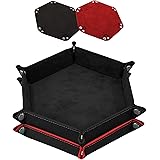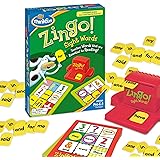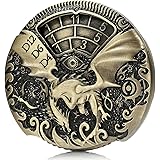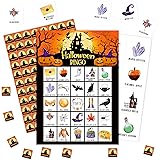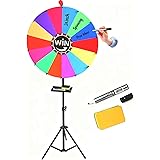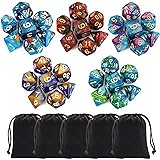Craps, often perceived as a game of pure chance, is in reality a complex interplay of probabilities, psychology, and strategic betting. For the discerning player who appreciates the nuances of house edge and dynamic table play, developing a robust strategy is paramount. The “Don’t Pass” line, a foundational bet in craps, offers one of the lowest house edges in the casino, making it a favored starting point for many seasoned gamblers. Building upon this solid base, the video above delves into a fascinating adaptation: the Don’t Pass + 4 & 10 Bubble Craps Strategy, as demonstrated in a live session at Green Valley Ranch.
This approach moves beyond simply betting against the shooter; it integrates strategic offensive plays to create a balanced, adaptable system. It is designed for players seeking to minimize risk on early rolls while simultaneously creating opportunities for higher payouts when specific numbers emerge. The intricate dance between defensive “Don’t” betting and aggressive “Buy” bets on the 4 and 10 creates a unique tactical landscape that warrants deeper exploration.
The Foundational Strength of the Don’t Pass Line
Before dissecting the hybrid strategy, it is crucial to appreciate the inherent advantages of the Don’t Pass line itself. This bet stands in opposition to the more common Pass Line, paying even money when the shooter rolls a 2 or 3 on the come-out, and losing on a 7 or 11. Should a point be established, the Don’t Pass bet wins if a 7 is rolled before the point, and loses if the point is repeated. This places the Don’t Pass bettor in a position where they are rooting for a 7-out after the point is set, which is statistically more likely than any single point number appearing before the 7.
The beauty of the Don’t Pass, for those who embrace the “dark side” of craps, lies in its slightly superior house edge compared to the Pass Line (1.36% versus 1.41%). Furthermore, one can lay odds behind a Don’t Pass bet, which are true odds and carry no house edge, effectively reducing the overall house advantage on the initial bet even further. Imagine if every strategic decision you made at the table could be bolstered by a statistical edge; the Don’t Pass line, when understood, forms a cornerstone of such an approach.
Integrating the 4 and 10 Buy Bets: A Hedging Mechanism
The most distinctive feature of the Don’t Pass + 4 & 10 Bubble Craps Strategy is the introduction of Buy Bets on the 4 and 10 during the come-out roll. A traditional Don’t Pass player typically waits for a point to be established before taking action, perhaps laying odds. However, this strategy proactively places Buy Bets on the extreme numbers, the 4 and 10, right from the start. These numbers, along with 2, 3, 7, 11, and 12, are not part of the standard point numbers (4, 5, 6, 8, 9, 10), but they carry significant implications in this hybrid system.
Why the 4 and 10? These are the least frequent point numbers, rolled in only 3 ways each (out of 36 possible dice combinations). The Buy Bet on the 4 and 10 typically pays true odds (2:1) minus a 5% commission, often paid upfront based on the initial bet size. By placing these bets, the strategy attempts to mitigate the initial risk of a point being established on the come-out that would put the Don’t Pass bet at a disadvantage. If a 4 or 10 is rolled, the player wins the Buy Bet, and as the video demonstrates, might then “pull them down” and adjust the strategy. This initial “bubble” of bets provides immediate feedback and shapes the subsequent rounds of play.
Dynamic Play and Adaptation: The “Bubble” in Action
The “Bubble Craps” designation in this strategy refers to its dynamic, adaptable nature, particularly how it navigates the volatile come-out rolls. As the speaker in the video illustrated, starting with a $25 bankroll at Green Valley Ranch, initial bets might be $1 on Don’t Pass, accompanied by Buy Bets on 4 and 10. The outcomes of early rolls dictate immediate adjustments:
- Seven-Out or Eleven: If a 7 or 11 is rolled on the come-out, the Don’t Pass bet loses, while the 4 and 10 Buy Bets are unaffected (as no point was established). The player must then reassess. The speaker experienced a rapid succession of 7s, highlighting the inherent volatility and the need for prompt bankroll adjustments, like increasing the Don’t Pass bet to $2.
- Craps (2, 3, 12): A roll of 2 or 3 results in an immediate win for the Don’t Pass, while a 12 is a push. The 4 and 10 Buy Bets remain in play, providing additional hedging or profit opportunities on subsequent rolls.
- Point Established (4, 5, 6, 8, 9, 10): If a point like 5, 6, 8, or 9 is rolled, the Buy Bets on 4 and 10 offer no immediate return, but the Don’t Pass bet now awaits a 7-out. However, if a 4 or 10 is rolled as the point, the Buy Bet pays out, and the player might then choose to remove the 4/10 bets and focus solely on the Don’t Pass odds, minimizing exposure. The player in the video explicitly states, “if we get a hit on either the four or the ten, we’ll pull them down and just play for the DP.” This demonstrates the immediate strategic shift after a favorable outcome on the “bubble” bets.
This strategic adaptability is crucial. The speaker often mentions “hedging” — a key concept in this strategy. Hedging in craps involves placing bets that offset potential losses from other bets. For instance, if the shooter has established a point, placing a small “field” bet could hedge against the immediate possibility of certain numbers that aren’t the point. While not always directly profitable, hedging aims to smooth out variance and preserve bankroll over a longer session.
Strategic Nuances and Prudent Bankroll Management
Effective implementation of the Don’t Pass + 4 & 10 Bubble Craps Strategy necessitates a keen understanding of bet sizing and when to press or pull back. The speaker starts with a modest $1 on the Don’t Pass, indicating a conservative entry point. When a point is established, the ability to “increase with odds” or “add odds” becomes the real advantage, as true odds bets significantly lower the overall house edge of the Don’t Pass bet.
The concept of “breaking even, or a little bit less than” on initial sequences suggests a tactical goal of capital preservation. Rather than chasing large wins on every roll, the strategy appears to prioritize minimizing losses and maintaining a flexible bankroll. For instance, after a few losing rolls where the bankroll dipped from $25 to $19.95, the speaker still maintains the $2 Don’t Pass bet, showing a commitment to the core strategy while searching for the advantageous rolls of 4 or 10. Subsequent fluctuations, like reaching $21.3 after a ten, further illustrate the dynamic ebb and flow of this system.
Key Considerations for Players:
- Bankroll Fluctuations: This strategy, like any in craps, will see your bankroll fluctuate. Be prepared for swings, especially with the “Don’t Pass” element.
- Patience: Waiting for favorable rolls to establish a point or to hit the 4 or 10 requires patience. This is not a fast-paced, aggressive “right-side” strategy.
- Commission on Buy Bets: Always remember the 5% commission on Buy Bets, typically paid upfront. Ensure your bet size makes this worthwhile. For example, a $20 Buy Bet would incur a $1 commission.
- Table Minimums: Be aware of table minimums for both Don’t Pass and Place/Buy bets. This strategy can be adjusted for various stakes.
The Appeal to the Expert Craps Player
The Don’t Pass + 4 & 10 Bubble Craps Strategy resonates with expert craps players because it introduces a layer of calculated risk and dynamic decision-making. It isn’t a set-it-and-forget-it system; it demands attention and quick adjustments, as evidenced by the speaker’s on-the-fly calls to “hedge” or “pull down” bets. The strategic integration of a defensive bet (Don’t Pass) with selective offensive bets (Buy 4 & 10) creates a complex profile that can be appealing for those who thrive on manipulating probabilities. This strategy often targets specific sequences of dice rolls, aiming to capitalize on the lower frequency of points being made compared to a 7-out after a point is established, while protecting against common come-out rolls.




